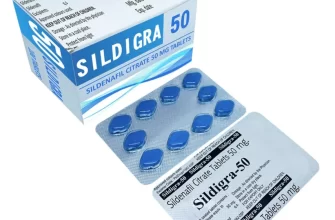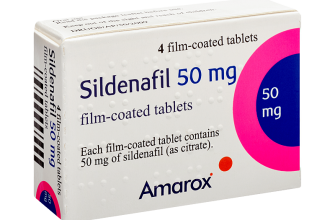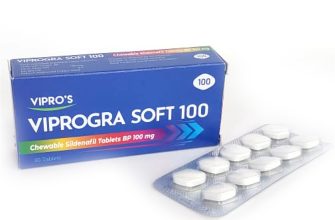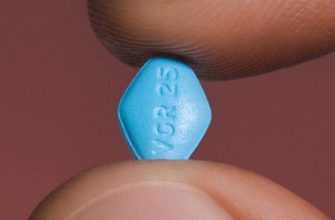If you’re considering a trial prescription of Viagra, consulting with a healthcare professional is your first step. They will assess your medical history, current medications, and overall health to determine the suitability of Viagra for you. This personalized approach ensures that the treatment is not only safe but also tailored to your specific needs.
Trial prescriptions can vary in duration, often ranging from a few days to a couple of weeks. During this period, pay attention to how your body responds. It’s essential to communicate any side effects to your doctor. Common reactions include headaches, flushing, and nasal congestion. Understanding your body’s feedback is crucial for optimizing your treatment plan.
Additionally, consider the recommended dosage carefully. Starting with a lower dose allows you to gauge efficacy while minimizing the risk of side effects. Adjustments can be made based on your experience and medical guidance. Keep a journal of your experiences to discuss during follow-up appointments–this proactive approach enhances your healthcare provider’s ability to support you effectively.
- Trial Prescriptions of Viagra: An Insightful Overview
- Understanding Viagra: Mechanism of Action
- How It Affects Erection
- Considerations for Use
- Eligibility Criteria for Trial Prescriptions
- How to Obtain a Trial Prescription of Viagra
- Consultation Process
- Pharmacy Options
- Common Side Effects to Expect During Trials
- Possible Physical Reactions
- Less Frequent Effects
- Monitoring Effects: What Patients Should Observe
- Side Effects to Watch For
- Assessing Overall Well-being
- Interacting Medications: What to Avoid with Viagra
- Other Medications to Avoid
- Consult Your Doctor
- Patient Testimonials: Experiences with Trial Prescriptions
- Real-Life Success Stories
- Challenges Faced
- Insurance Coverage for Viagra Trial Prescriptions
- Future Prospects: Research and Development on Viagra
Trial Prescriptions of Viagra: An Insightful Overview
Trial prescriptions of Viagra offer a practical approach for patients seeking relief from erectile dysfunction. These trials allow individuals to evaluate the medication’s effectiveness before committing to a full prescription. Healthcare providers often initiate this process to determine the right dosage and ensure safety based on patient-specific factors.
Typically, trial prescriptions come in lower doses, ranging from 25 mg to 50 mg. This allows patients to assess their response to the medication while minimizing potential side effects. It’s advisable for individuals to maintain open communication with their healthcare provider during this period to monitor any reactions or questions.
The duration of trial prescriptions usually spans a few weeks, giving enough time to understand how Viagra interacts with the body. Providers may recommend taking the medication approximately 30 minutes to an hour before anticipated sexual activity. This timing enhances the likelihood of achieving optimal results.
Patients should be aware of common side effects such as headaches, flushing, or digestive issues. Should any severe reactions occur, it’s crucial to seek medical attention immediately. Regular follow-up appointments with healthcare providers ensure proper adjustments to the treatment plan as needed.
Insurance coverage for trial prescriptions varies, so individuals should consult with their insurance provider regarding possible costs and coverage options. This information helps in making informed decisions regarding treatment paths.
Employing trial prescriptions can facilitate a better understanding of Viagra’s role in managing erectile dysfunction, allowing patients to explore effective solutions tailored to their needs. Engaging with healthcare professionals throughout the trial phase fosters informed decision-making and leads to improved outcomes.
Understanding Viagra: Mechanism of Action
Viagra works primarily by enhancing blood flow to the penis. It contains the active ingredient sildenafil, which inhibits phosphodiesterase type 5 (PDE5), an enzyme that regulates blood flow in the penis. By blocking PDE5, Viagra increases levels of cyclic guanosine monophosphate (cGMP), a substance that relaxes the smooth muscle and dilates blood vessels.
How It Affects Erection
When a man is sexually stimulated, nitric oxide is released in the corpus cavernosum of the penis. Viagra amplifies this natural response by prolonging the effect of cGMP. This results in increased blood flow, leading to a firmer and longer-lasting erection. Timing is key; Viagra can be taken about 30 to 60 minutes before sexual activity for optimal effectiveness.
Considerations for Use
Consult with a healthcare provider before starting Viagra, especially if there are underlying health conditions or other medications being taken. Possible side effects include headaches, facial flushing, and indigestion. Report any severe side effects, such as sudden vision loss or an erection lasting longer than four hours, to a medical professional.
By understanding its mechanism, users can better appreciate how Viagra functions and its role in treating erectile dysfunction. This knowledge can empower individuals to make informed decisions about their sexual health.
Eligibility Criteria for Trial Prescriptions
To qualify for trial prescriptions of Viagra, individuals must meet specific health parameters. Firstly, candidates should be at least 18 years old, with no upper age limit. A medical assessment will evaluate the presence of erectile dysfunction (ED), which may stem from various underlying conditions, including diabetes, hypertension, or psychological factors.
Candidates are required to disclose their medical history, particularly regarding cardiovascular health. Those with severe heart conditions, such as uncontrolled hypertension or recent heart attacks, are generally excluded. Additionally, individuals taking nitrates for chest pain or similar medications must not participate due to the risk of dangerous interactions.
A thorough review of other medications is essential. Individuals on certain drugs that may affect blood flow or interact negatively with Viagra will not qualify. This includes alpha-blockers and some antifungal medications. The prescribing physician will assess all aspects of the patient’s health status before approval.
Lastly, candidates must not have a known allergy to sildenafil or any excipients in the formulation. A psychological evaluation may also be advised to rule out underlying mental health issues that could affect sexual performance. Meeting these criteria ensures that participants can safely and effectively use trial prescriptions for Viagra.
How to Obtain a Trial Prescription of Viagra
Contact a healthcare provider to discuss your interest in a trial prescription of Viagra. Be prepared to share information about your medical history and current medications to ensure it’s safe for you.
Consultation Process
During the consultation, your provider will assess your symptoms and determine if Viagra is an appropriate treatment option. If suitable, they may write you a trial prescription. This could range from a few doses to a month’s supply, depending on your needs.
Pharmacy Options
Once you have the prescription, choose a local pharmacy or an online service for filling it. If opting for an online pharmacy, confirm its legitimacy by checking accreditation sites. Always ensure that the pharmacy requests a valid prescription.
Common Side Effects to Expect During Trials
Participants in Viagra trials may experience several side effects. Recognizing these can help manage expectations and enhance comfort during the process.
Possible Physical Reactions
Common physical side effects include headaches, flushing, indigestion, and nasal congestion. Headaches often occur due to changes in blood flow. If headaches become troublesome, consider discussing pain relief options with your healthcare provider.
Flushing, or warmth in the face, typically arises shortly after taking the medication. Staying hydrated can mitigate this sensation. Indigestion may be alleviated by avoiding heavy meals around the time of taking Viagra.
Less Frequent Effects
Some individuals report changes in vision, such as increased sensitivity to light or tinted vision. If you encounter any visual disturbances, contact your healthcare professional for guidance.
Back pain and muscle aches are also reported but are less common. Engaging in light stretching or gentle exercise may help ease discomfort. Remember that side effects often diminish as the body adjusts to the medication.
If any side effect persists or worsens, reach out to your healthcare provider for tailored advice and support. Understanding what to expect can turn your trial experience into a more manageable process. Always prioritize open communication with your healthcare team.
Monitoring Effects: What Patients Should Observe
Track your body’s response to Viagra closely during the trial period. Notice any positive changes in sexual function and overall satisfaction. Keep a record of the effectiveness and duration of the erection after taking the medication.
Side Effects to Watch For
- Headaches
- Flushing or redness in the face
- Nasal congestion
- Indigestion or upset stomach
- Visual disturbances, such as changes in color perception
If you experience any severe or persistent side effects, contact your healthcare provider promptly. Documenting these occurrences can help in adjusting dosages or changing the prescribed medication.
Assessing Overall Well-being
Evaluate your emotional state and relationship impact as you use Viagra. Improved sexual performance can enhance intimacy and communication with your partner. Share your observations with a healthcare professional to ensure that both physical and emotional needs are addressed.
- Note any changes in mood or relationship dynamics.
- Reflect on your confidence levels and satisfaction with intimate experiences.
Regular check-ins with your doctor can provide support and guidance throughout this process. Maintaining open communication will help optimize your treatment and improve outcomes.
Interacting Medications: What to Avoid with Viagra
Avoid combining Viagra with nitrates, commonly used for chest pain. This combination can lead to severe drops in blood pressure. Nitrates include medications like nitroglycerin and isosorbide dinitrate.
Other Medications to Avoid
- Alpha-blockers: These medications, like terazosin and doxazosin, can also lower blood pressure when taken with Viagra.
- Antifungal medications: Drugs like ketoconazole and itraconazole may increase Viagra levels in the blood, enhancing side effects.
- HIV protease inhibitors: Medicines such as ritonavir and saquinavir can elevate Viagra concentrations, increasing the risk of adverse reactions.
- Other ED medications: Avoid combining with other erectile dysfunction treatments, as this can create dangerous side effects.
Consult Your Doctor
Discuss all medications you’re taking with your healthcare provider to prevent harmful interactions. Always follow their guidance regarding Viagra use.
Patient Testimonials: Experiences with Trial Prescriptions
Many patients have shared positive experiences with trial prescriptions of Viagra. These firsthand accounts highlight the benefits and challenges encountered during the process.
Real-Life Success Stories
John, a 52-year-old patient, reported a significant improvement in his confidence levels after using a trial prescription. “I felt like a new man,” he stated. “The trial period allowed me to see how effectively it worked without the commitment of a full prescription.”
Sarah, a partner of a trial participant, expressed gratitude for the experience. “My husband tried Viagra during the trial, and it truly transformed our intimacy. We both felt closer and more connected,” she shared.
Challenges Faced
While many experienced benefits, some individuals faced side effects. Mark, 45 years old, mentioned, “I encountered headaches a few times after taking the pill. It was manageable, but I needed to discuss it with my doctor.” This led to adjustments in his dosage for better comfort.
Another participant, Lucy, highlighted the importance of communication with healthcare providers. “I had concerns about possible interactions with my other medications. My doctor was supportive and guided me through the process,” she recounted.
| Patient | Age | Experience | Comments |
|---|---|---|---|
| John | 52 | Positive | Boosted confidence and intimacy. |
| Sarah | N/A | Supportive | Improved relationship dynamics. |
| Mark | 45 | Mixed | Experienced some headaches. |
| Lucy | N/A | Careful | Ensured safe usage with doctor. |
Insurance Coverage for Viagra Trial Prescriptions
Many insurance plans offer coverage for Viagra trial prescriptions; however, benefits can vary significantly. Check your specific policy to confirm whether Viagra is included. Typically, insurers require a prior authorization for coverage, especially if the prescription is related to erectile dysfunction.
Contact your insurance provider directly to clarify details about coverage limits, co-pays, and deductibles for Viagra. Be prepared to provide documentation of your medical condition, as some insurers may need additional information supporting the necessity for the medication.
If you encounter difficulties with coverage, consider discussing alternative options with your healthcare provider. They might suggest different medications that may be covered or explore other treatment strategies. Additionally, some pharmaceutical companies offer assistance programs for individuals without adequate insurance. Check out the manufacturer’s website for potential savings or trial offers.
Always keep records of your correspondence with the insurance company. This ensures you have a clear understanding of your coverage and can address any disputes should they arise. A well-documented appeal can aid in securing the necessary coverage for your prescription.
Future Prospects: Research and Development on Viagra
Exploring novel formulations of Viagra could enhance patient experience. Researchers are investigating slow-release versions, allowing for prolonged effects with fewer doses. Studies demonstrate that these formulations may improve adherence, particularly among those with varying activity levels.
Collaboration with biotechnology firms is creating opportunities for advanced delivery systems. Transdermal patches and sublingual tablets represent innovative alternatives that could increase convenience. Early trials indicate a promising onset of action, appealing to users seeking discretion and rapid results.
Continued research into the molecular mechanisms of Viagra reveals potential applications beyond erectile dysfunction. Findings suggest that sildenafil may have benefits for pulmonary hypertension and heart disease. Ongoing clinical trials are necessary to establish safety and efficacy in these areas.
Patient feedback plays a vital role in shaping future developments. Engaging individuals through surveys and focus groups ensures that new products align with users’ desires. Taking these insights into account can guide the refinement of existing formulations and the introduction of new ones.
As the pharmaceutical landscape evolves, integrating personalized medicine into Viagra’s development is paramount. Genetic testing may one day tailor treatments based on individual responses, optimizing outcomes. This approach holds promise for improving therapeutic effectiveness while minimizing side effects.
Staying informed about regulatory updates will be crucial. As health authorities adapt to scientific advancements, swift approval processes for innovative formulations may emerge. Developers must navigate these changes to bring their products to market efficiently.
The future of Viagra hinges on progressive research, collaboration, and patient-centered approaches. Maximizing its potential requires commitment from pharmaceutical firms, healthcare providers, and patients alike.








